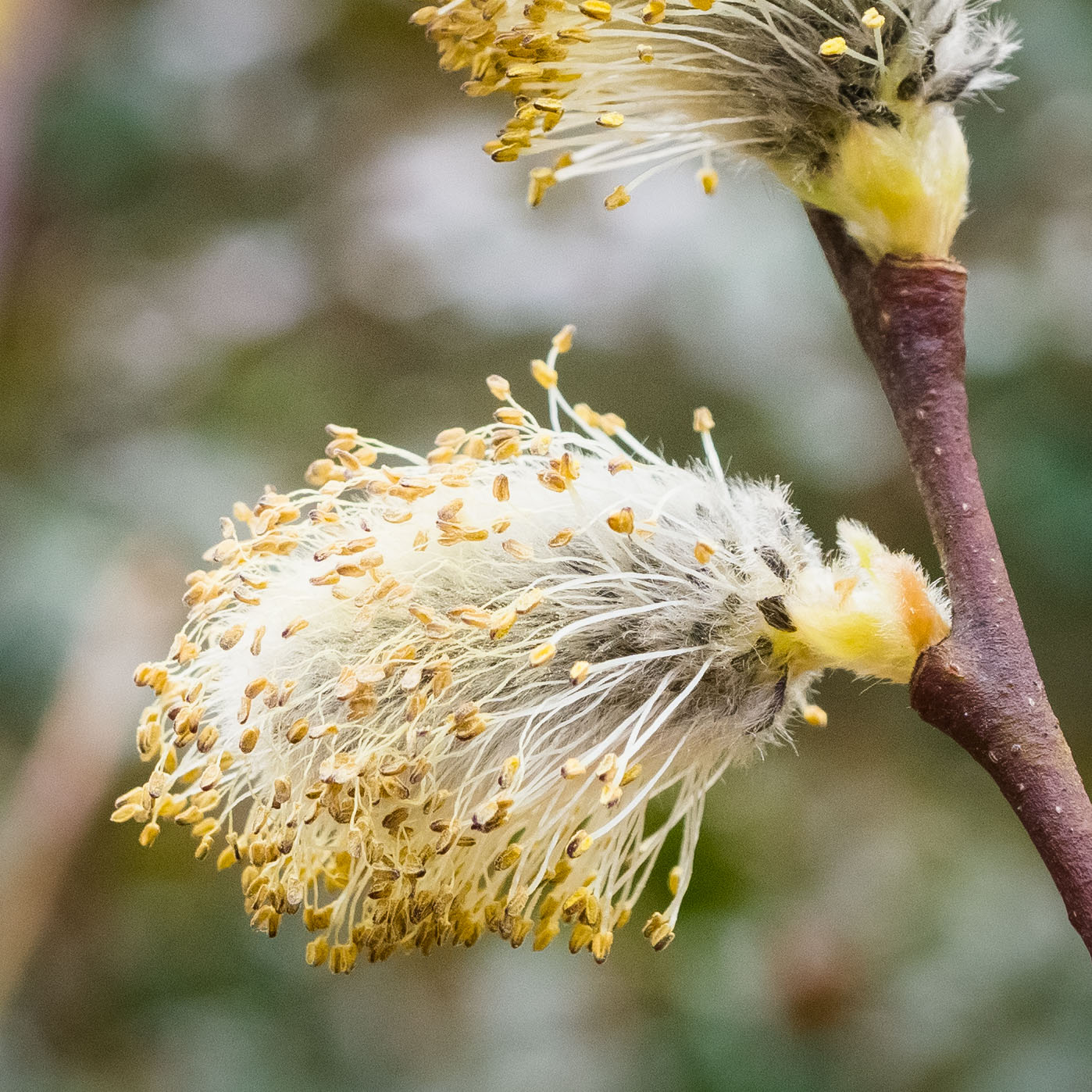Two weeks ago, I posted photos of buds of some common Pacific NW trees and shrubs. These included pussy willows, here.
At that time, pussy willows were bearing small, furry, oval-shaped tufts. The furry tufts were the beginnings of male flowers, or catkins.
It’s now two weeks later in the spring. What are pussy willow catkins doing?
Today: Pussy willow catkins, mid-March
Long stamens (male flower parts) have emerged from the fuzz of the pussy willow catkins. Some stamens have already released their yellow pollen, while other stamens will release it soon.
Breeze causes the yellow pussy willow pollen to disperse. Passing birds and other animals may also play a role. If you shake these twigs or brush up against them, you will get enveloped in a cloud of yellow pollen dust.
With luck, a grain of pollen will land in the ovule of a female catkin and begin the process of forming a seed.
While the odds of reproduction might seem slim, all it takes to perpetuate the species is one successful germination—growing into one successful adult—over the lifetime of a shrub! And each male pussy willow shrub produces millions of pollen grains per year.
Look carefully at the photo: Notice that some yellow pollen has lodged on the fuzzy fibers, where it will be unable to contribute to reproduction.
Note: Only some willow species bear these small furry catkins. These species are generically called pussy willows, in addition to their common and scientific names. (To confuse the issue, there are also two different willow species that have the common name “pussy willow,” but neither is native to the Pacific NW.)
Other willow species do not bear these furry catkins at all and are not called pussy willows.

